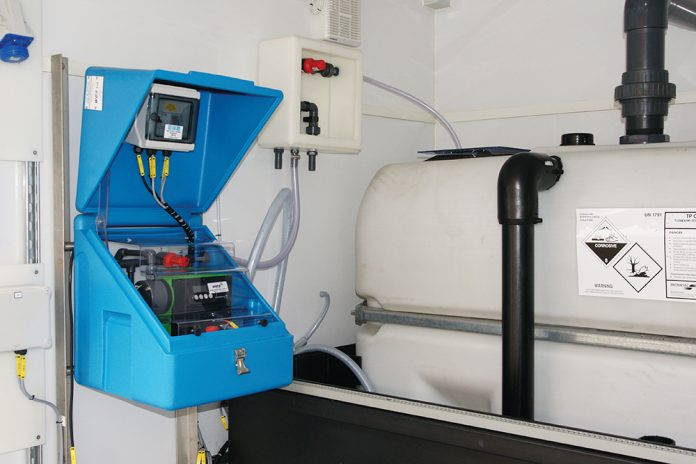Even as the covid-19 pandemic continues to stifle investment, water companies have to meet the more stringent requirements for the removal of phosphorus from wastewater brought in under AMP7. Graham Ward at chemical dosing specialists WES Ltd, outlines how this challenge can be met through the use of compact packaged dosing systems.
Coming into force in April 2020, AMP7 has created a variety of challenges for companies operating in the water sector, key among which is the need to do more to remove phosphorous from wastewater. Such companies might need to make significant capital investments in order to meet these obligations, but AMP7 was not the only problem they faced during the first half of last year. The coronavirus (covid-19) pandemic – and the associated lockdowns – led to many operating in the sector to suffer financially, according to a survey published by British Water in October 2020. Significantly, more than a quarter of respondents laid-off employees and around 20% experienced cashflow concerns—with half of these halting new investments in response (1).
Controlling costs
How then can companies operating in this sector meet these increasingly stringent requirements for phosphorus removal while keeping their capital expenditure to a minimum? Chemical dosing is an established and proven means for removing phosphorus from wastewater, but the majority of systems for carrying out this process have been developed with larger treatment plants in mind and, as such, are too expensive and unwieldy for use on the smaller sites where they will likely now be needed.
The right dose
Installing a dosing system in a small, difficult-to-access location can present significant difficulties. Its capital cost, the accuracy with which it can deliver the necessary chemicals, and the ease and cost of installing and maintaining it all need to be balanced precisely. Careful choices must be made with regards to the components used. The selection of the right pump for the job, for instance, will require extensive consideration, owing at least in part to the wide variety of options available.
The chemical storage tank, meanwhile, must not only be resistant to the chemicals it contains, but it might also have to withstand the wide variety of conditions thrown at it by the weather if it is to be installed outdoors. Further, its capacity needs to sufficient to facilitate convenient, cost-effective deliveries that will prevent runouts.
Simple solutions
Given this high level of complexity, the water industry is turning to small, standardised chemical dosing systems that are simple to specify and are highly versatile in terms of where they can be deployed. Further, such systems can be built to a repeatable design and manufactured in efficient batches—keeping costs and lead times down.
The DS1500 unit from WES, for instance, is fully enclosed within a weatherproof, rotationally moulded polyethylene casing and is designed specifically to be compact and robust enough for installation in indoor and outdoor sites requiring small-to-medium capacity. The use of digital dosing pumps, which have a user interface that allows for the dosing rate to be entered directly onto the screen, makes the system easy to use. Further, it can have a wide turn-down ratio (the ratio between the maximum and minimum output of the pump) and eliminates the need for complicated stroke rate calculations.
Such systems can be fitted with a polyethylene chemical storage tank with a working volume of 1,500 litres, meaning that they can accept 1,000-litre deliveries from commercial chemical suppliers, and it can also be filled by pumping from an on-site intermediate bulk container.
Fully constructed and tested in the factory, these integrated systems can be up and running shortly after they are delivered to the site, making them a simple and cost-effective solution to the problem of chemical dosing in small, hard-to-access facilities.
For further Information, visit www.wes.ltd.uk
(1) https://www.britishwater.co.uk/article/survey-reveals-covid-19-impact-on-water-supply-chain-762.aspx



